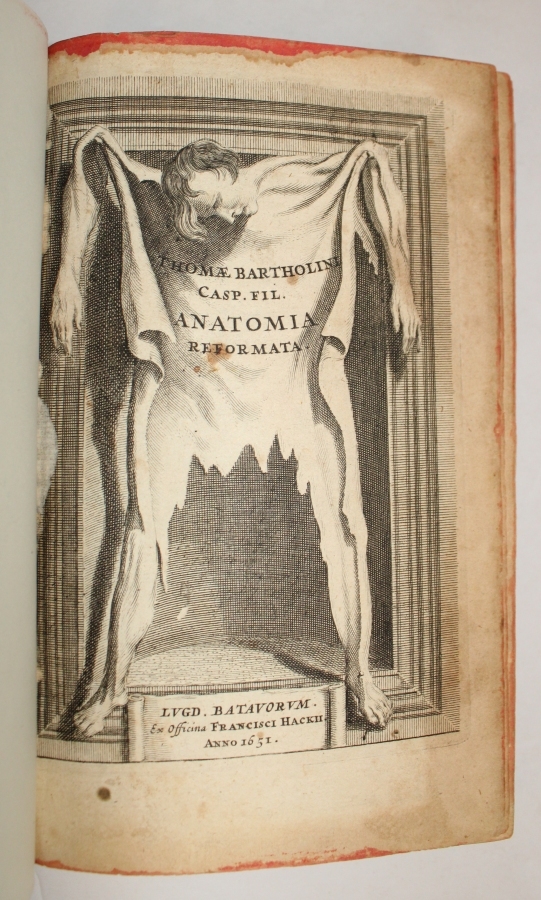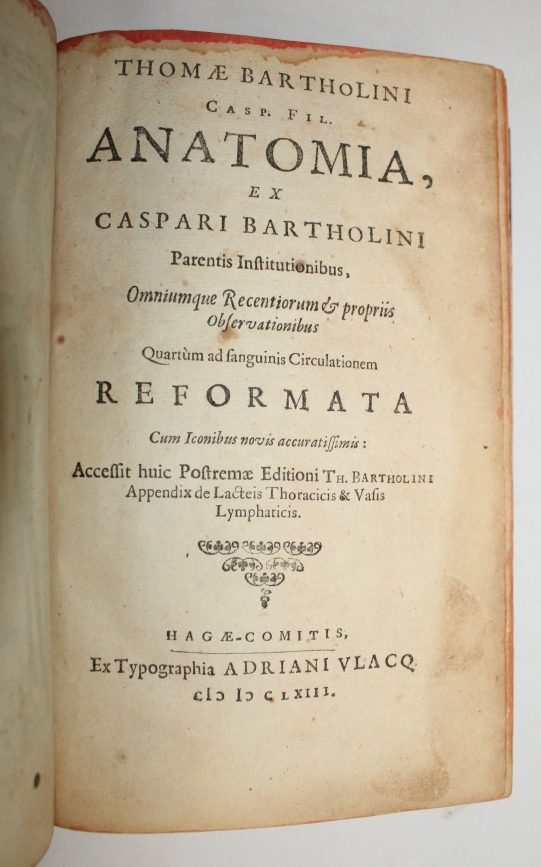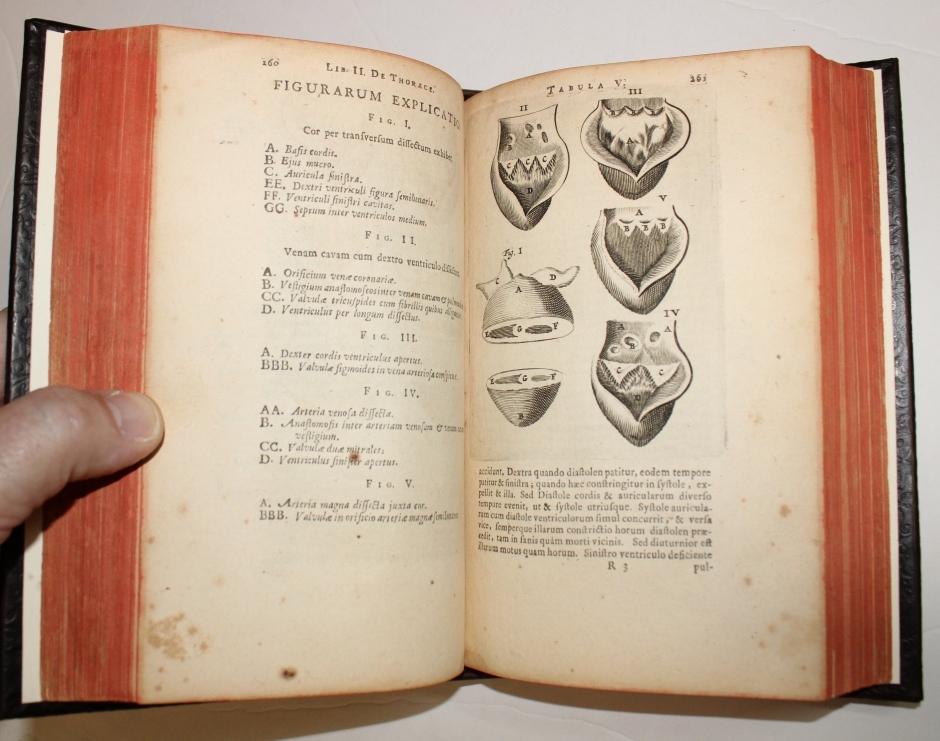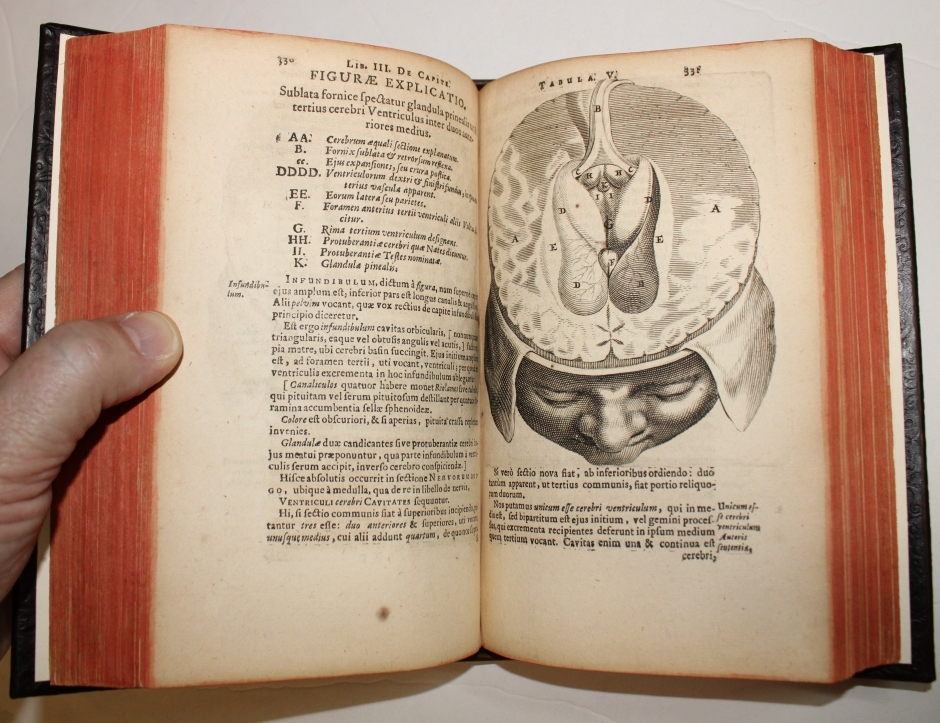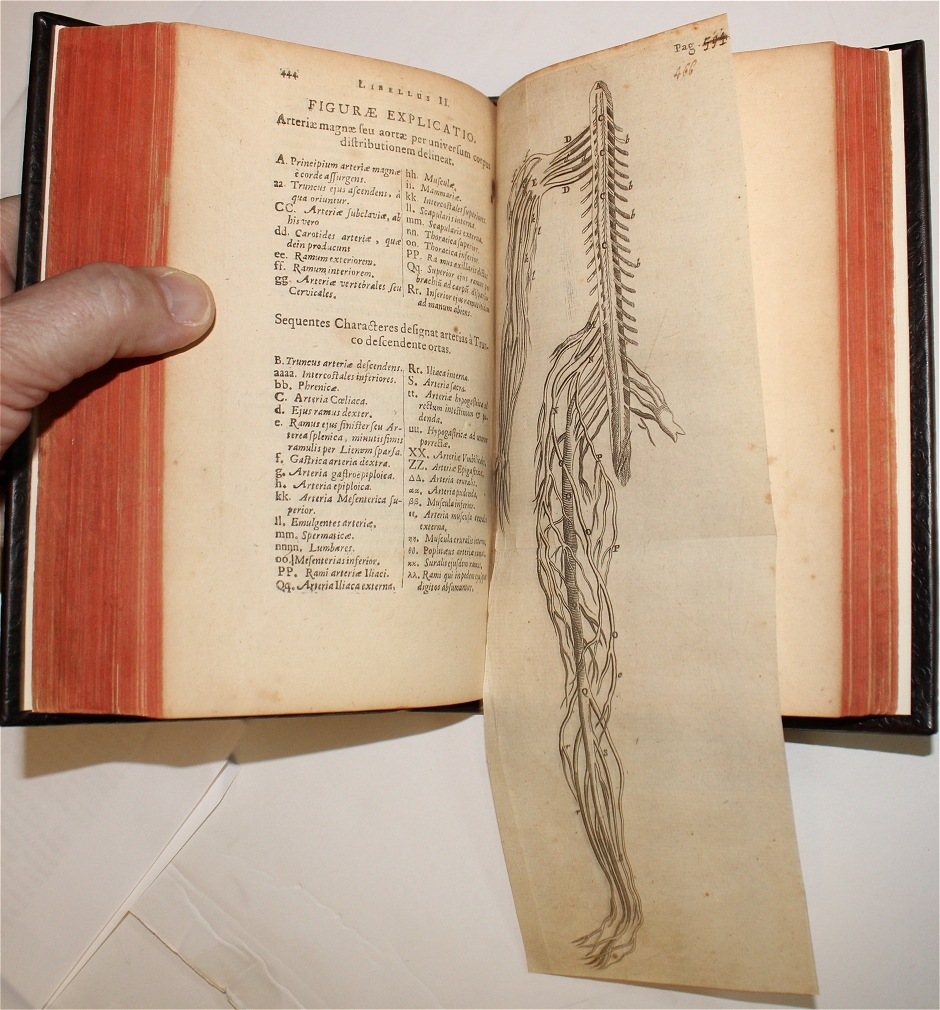eList 88: Medicine and Surgery
View full eList
All Prices listed are in Canadian Funds. Canadian residents to add 5% GST. Shipping charges will be added. U.S. clients will be billed in U.S. funds at the current rate of exchange.
Images are not to scale.
Please contact us via email to inquire about this item.
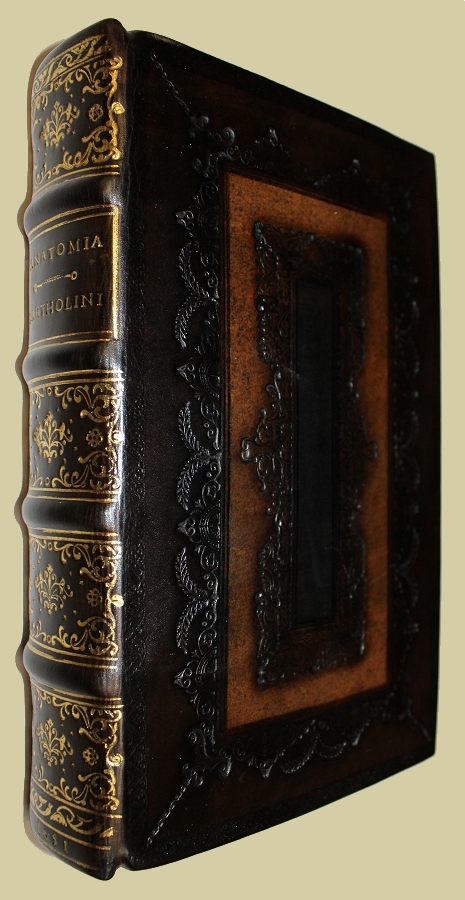 BARTHOLIN, Thomas. Anatomia ... Omniumque Recentiorum & propriis Observationibus Quartum ad sanguinis Circulationem Reformata. Cum Iconibus novis accuratissimis. . .
BARTHOLIN, Thomas. Anatomia ... Omniumque Recentiorum & propriis Observationibus Quartum ad sanguinis Circulationem Reformata. Cum Iconibus novis accuratissimis. . .
Hagae-Comitis (Hague): Ex Typographia Adriani Vlacq (Adrian Vlacq), 1663. Fourth edition. Tall 8vo., recently rebound in full brown panelled calf, raised bands, gilt compartments, leather spine label (after the period), top edge stained red, (16), 1-592, (14)pp. With eight folding plates and numerous full-page illustrations in the text including a portrait of Bartholin. With an engraved title-page dated ‘1651'. One of the folding plates is missing a 3 cm x 9 cm strip at the bottom with some loss to image, two other folding plates have archival repairs to verso (no loss), some scattered foxing o/w a near fine copy in an attractive binding.
Thomas Bartholin [1616-1680] Danish physician, naturalist, physiologist, and anatomist, was one of several seventeenth-century researchers who greatly expanded knowledge of the working anatomy of various glands and their ducts, the biliary system, and the lymphatic system. Bartholin is commonly credited with the first description of the thoracic duct in man and Jean Picquet with recognizing it in animals a few years earlier... Thomas studied and traveled widely in Europe, receiving his medical degree at Basel in 1645. He returned to Copenhagen in 1647 to accept the chair of mathematics and, a year later, the professorship of anatomy. In 1652 he demonstrated the thoracic duct in man and in 1653 he was successful in observing the human lymphatic vessels. Thereafter, he continued his academic pursuits and development of the medical school until 1663, when he retired from academic life to devote himself to writing, scientific, and literary pursuits.' (Heirs 514) ‘Like his father, Casper Bartholin, the equally famous Danish anatomist, he wrote several anatomical treatises which became very popular textbooks and were translated into several other languages. In reality, however, they were revisions of his father's Institutions anatomical (1611). Although the illustrations differed from edition to edition, few of them were original. Most were after Vedalias, Cassiri, Veiling, Bauhin, Ruysch, and others.' (Heirs 514) Wellcome II p.107; Heirs of Hippocrates 514 (second edition, 1655); Waller 714 (edition of 1660).
$2,750
 BARTHOLIN, Thomas. Anatomia ... Omniumque Recentiorum & propriis Observationibus Quartum ad sanguinis Circulationem Reformata. Cum Iconibus novis accuratissimis. . .
BARTHOLIN, Thomas. Anatomia ... Omniumque Recentiorum & propriis Observationibus Quartum ad sanguinis Circulationem Reformata. Cum Iconibus novis accuratissimis. . . Hagae-Comitis (Hague): Ex Typographia Adriani Vlacq (Adrian Vlacq), 1663. Fourth edition. Tall 8vo., recently rebound in full brown panelled calf, raised bands, gilt compartments, leather spine label (after the period), top edge stained red, (16), 1-592, (14)pp. With eight folding plates and numerous full-page illustrations in the text including a portrait of Bartholin. With an engraved title-page dated ‘1651'. One of the folding plates is missing a 3 cm x 9 cm strip at the bottom with some loss to image, two other folding plates have archival repairs to verso (no loss), some scattered foxing o/w a near fine copy in an attractive binding.
Thomas Bartholin [1616-1680] Danish physician, naturalist, physiologist, and anatomist, was one of several seventeenth-century researchers who greatly expanded knowledge of the working anatomy of various glands and their ducts, the biliary system, and the lymphatic system. Bartholin is commonly credited with the first description of the thoracic duct in man and Jean Picquet with recognizing it in animals a few years earlier... Thomas studied and traveled widely in Europe, receiving his medical degree at Basel in 1645. He returned to Copenhagen in 1647 to accept the chair of mathematics and, a year later, the professorship of anatomy. In 1652 he demonstrated the thoracic duct in man and in 1653 he was successful in observing the human lymphatic vessels. Thereafter, he continued his academic pursuits and development of the medical school until 1663, when he retired from academic life to devote himself to writing, scientific, and literary pursuits.' (Heirs 514) ‘Like his father, Casper Bartholin, the equally famous Danish anatomist, he wrote several anatomical treatises which became very popular textbooks and were translated into several other languages. In reality, however, they were revisions of his father's Institutions anatomical (1611). Although the illustrations differed from edition to edition, few of them were original. Most were after Vedalias, Cassiri, Veiling, Bauhin, Ruysch, and others.' (Heirs 514) Wellcome II p.107; Heirs of Hippocrates 514 (second edition, 1655); Waller 714 (edition of 1660).
$2,750
